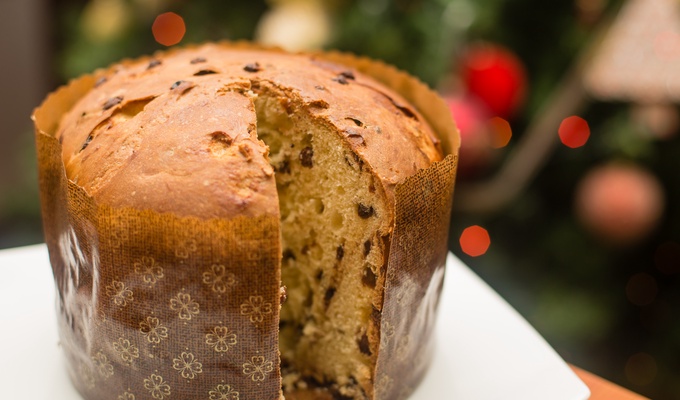Panettone is an Italian type of sweet bread originally from Milan, usually prepared and enjoyed for Christmas and New Year's Day in Western, Southern, and Southeastern Europe as well as in South America, Eritrea, Australia, the United States and Canada.
It has a cupola shape, which extends from a cylindrical base and is usually about 12–15 cm high for a panettone weighing 1 kg. Other bases may be used, such as an octagon, or a frustum with a star section shape more common to pandoro. It is made during a long process that involves curing the dough, which is acidic, similar to sourdough. The proofing process alone takes several days, giving the cake its distinctive fluffy characteristics. It contains candied orange, citron, and lemon zest, as well as raisins, which are added dry and not soaked. Many other variations are available such as plain or with chocolate. It is served in wedge shapes, vertically cut, accompanied with sweet hot beverages or a sweet wine, such as Asti or Moscato d'Asti. In some regions of Italy, it is served with crema al mascarpone, a cream made by combining eggs, mascarpone, and a sweet liquer.
Efforts are underway to obtain Protected designation of origin and Denominazione di origine controllata status for this product, but these have not yet been successful. Former Italian Agriculture Minister Paolo De Castro was known to be looking at ways to protect genuine Italian cakes from growing competition in South America, and exploring whether action could be taken at the World Trade Organization.
